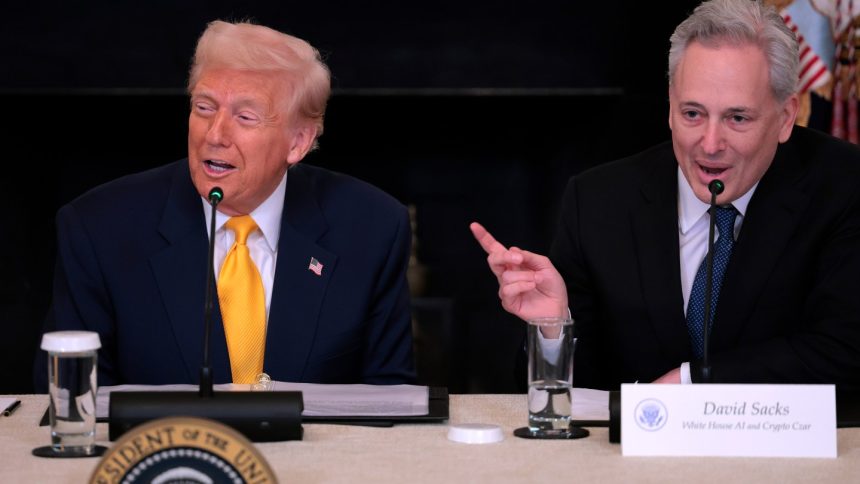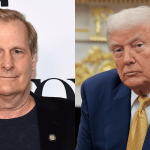Five Things to Know About Donald Trump’s “AI Action Plan” for Government Regulation
On Wednesday, as promised, President Donald Trump released his AI Action Plan. The news comes after he repealed his predecessor Joe Biden’s 100-plus page executive order on AI just days into his term and pledged something new would be coming in July.
Trump would take public comments until then, the White House and AI czar David Sacks (himself a tech mogul) said. Judging by the final 23-page document, those comments seemed to come mainly from tech companies who wanted even less regulation than they already had, which wasn’t very much. What to know about the plan and what it means? Here’s a breakdown.
This eviscerates Biden’s actions.
To be clear, Biden’s actions weren’t very strong, mostly by legal limitation. Unlike Europe’s landmark AI Act, which has the power to really stop companies from developing high-risk AI applications and requires transparency even on lower-risk ones, the Biden plan couldn’t and didn’t do much. It would be enforced the under the Commerce Department and mainly came in the vein of “if we asked nicely, will you help?” Among the biggest of its provisions was that tech companies share how a model works with government agencies before they’re released to the public. The enforcement mechanisms were a big question. Still, it was a flex of White House power, limited as it was, to try to keep tech companies in check before they could unleash models whose power they didn’t really understand. And it set the tone: the title was “Executive Order on the Safe, Secure, and Trustworthy Development and Use of Artificial Intelligence.” Anyway, it’s pretty much all gone now.
You Might Also Like
This replaces those actions with … not much.
Read through the document today and you won’t see much sign of regulation. The word comes up, but mainly following the adjectives “onerous,” “unnecessary” and “burdensome.” You will, however, see a variant on the word compete or competition eight times. You hardly need a degree in civics or Republican semiotics to know what that means: basically, “do your thing.” In any event, it confirms what we already knew: the federal government won’t be much of a check on tech companies that want to build out models and deploy them on the public before they have any idea what they can do. Sam Altman, Elon Musk, Marc Andreessen and other powerful tech-world figures who swung from the Democrats to Trump hoping to get what they want – a carte blanche – saw their strategy pay off today. Also, anyone hoping to build an energy-guzzling data center got a sop under the vague but still noteworthy “Build American AI Infrastructure … Create Streamlined Permitting for Data Centers, Semiconductor Manufacturing Facilities, and Energy Infrastructure.” Will any of it be green? “America’s environmental permitting system and other regulations make it almost impossible to build this infrastructure in the United States with the speed that is required,” the plan says, in case there was any doubt. For Hollywood, this means that studios and producers can use as much or as little AI as they want. Unfortunately, it also means that AI companies can encroach on Hollywood’s business as much as they want.
China is the threat … and the opportunity?
There is a decided contradiction in the paper and indeed much of the anti-regulator stances when it comes to China. On the one hand, China is the all-purpose bogeyman that should remove the shackles of regulation. “As our global competitors race to exploit these technologies, it is a national security imperative for the United States to achieve and maintain unquestioned and unchallenged global technological dominance,” Trump says in the document by way of explaining the need for a lack of regulation. On the other hand, China is also being touted as a trading partner because, after all, tech companies benefit when they can sell to China. Trump just lifted a ban on Nvidia selling chips to China that will bring the company billions. “Export American AI to Allies and Partners. The United States must meet global demand for AI by exporting its full AI technology stack— hardware, models, software, applications, and standards — to all countries willing to join America’s AI alliance,” the document says. Of course it doesn’t define at all who that is or what the standard would be. And while the paper notes it must “counter Chinese Influence in International Governance Bodies,” that really is just a way of saying it doesn’t want China to set regulation that will hamper the U.S.
Wokeness is bizarrely a main concern.
Of all the areas that worry AI Safety advocates, bias is high on the list. So is hate speech, social dysmorphia, misinformation, copyright infringement, job displacement and other imminent concerns. What isn’t high on the list? The idea that bots won’t be able to unleash enough trolling. Possibly because the guardrails aren’t exactly that restrictive now (as we saw when Grok went mad a few weeks ago and started messaging antisemitic vileness), possibly because AI isn’t social media and content moderation doesn’t really apply in the same way. Yet somehow it became a concern here, with the barely coded dogwhistle that tech companies must “uphold free speech in frontier models”and also that US. Government must “ensure that [it] only contracts with frontier large language model developers who ensure that their systems are objective and free from top-down ideological bias.” The good news is this is mostly performative irrelevance, as AI trains on giant amounts of data, and there’s often no way even for tech companies to know what it is, let alone for a bureaucrat to monitor same.
Will there be any resistance to the moves?
MAGA does have a tech-populist base, led by Missouri senator John Hawley. He’s been quiet on this, but has been vocal about how Google and other companies are taking what’s not theirs and need to find a way to “give individuals powerful enforceable rights and their image and their property and their lives back again.” As we saw on the Big Beautiful Bill, it remains to be seen if he can or will do anything meaningful about it (he didn’t there). The states are still in play, and at least thanks to an excision from that bill are not technically handcuffed from imposing regulation on AI. (Whether they will is another matter: California hasn’t.) Meanwhile there are lawsuits challenging what AI companies can grab, as we see in the Disney-Midjourney lawsuit. As is often the case these days, the best bet for regulation might be adjudication.







